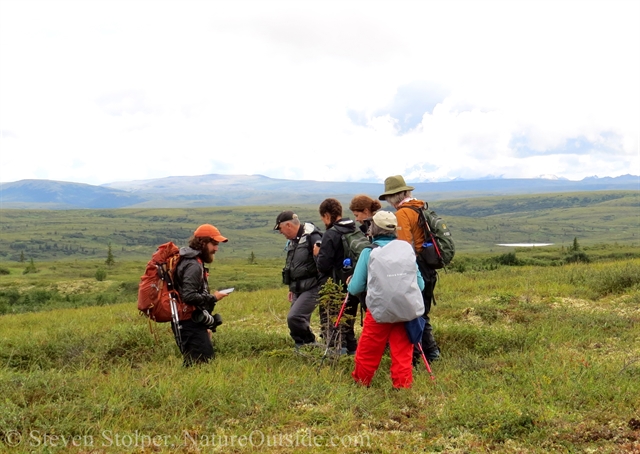
To the lover of wilderness, Alaska is one of the most wonderful countries in the world.
– John Muir
The Dreary Morning
Our bus rumbles down the gravel road as I stare at the wilderness beyond my window. I am in Denali National Park, Alaska.
Here nature is both scenery and force. It’s been raining for days. Though the rain has subsided, threatening clouds hang over the valleys and hide the snowy peaks from view.
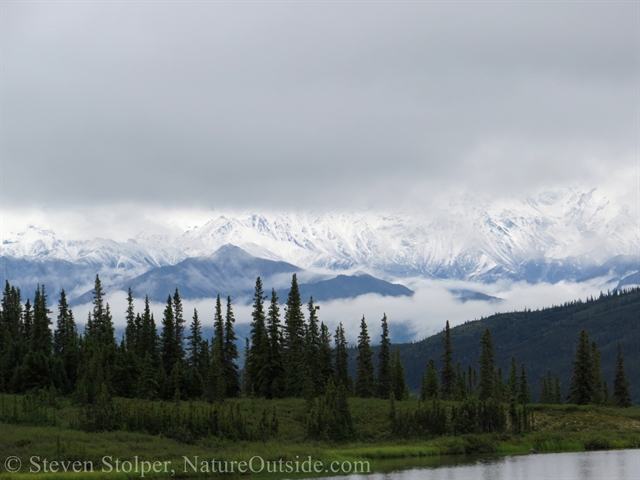
Clouds hide the peaks of the Alaskan Range
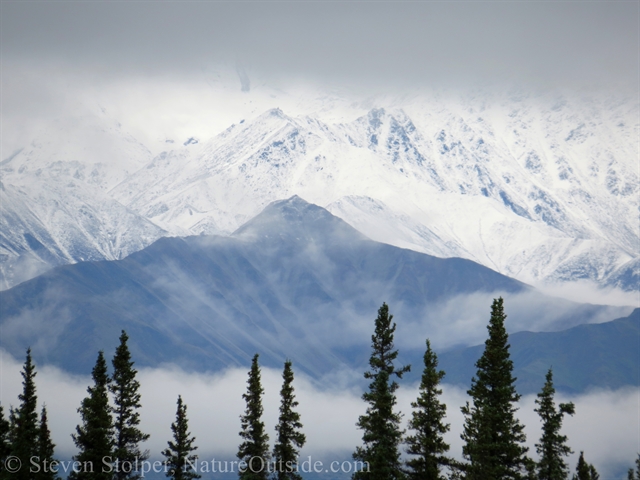
The snow covered peaks disappear into the threatening clouds
The tundra extends for miles, ringed by snowy peaks that jut like fangs above the flat expanse. Not a breath of wind stirs. There isn’t enough heat on the tundra to muster even a feeble breeze.
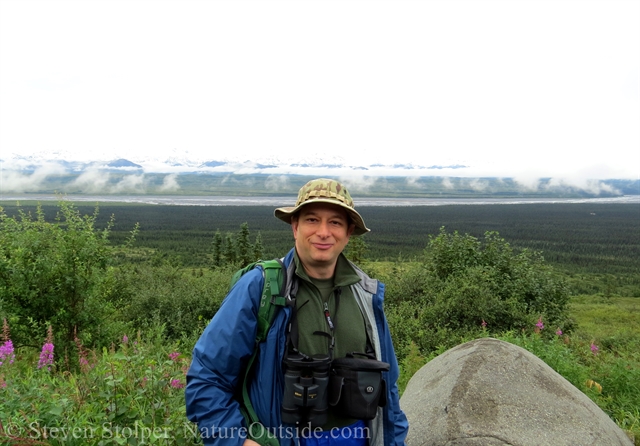
I’m prepared for the elements. My camera and binocular straps are underneath my rain jacket so I can shelter the optics from sudden rain showers.
This post contains affiliate links…
Kettle Ponds
We’re headed to explore kettle ponds – Something I’ve wanted to do since I first learned of them.
Underneath the tundra is concrete-like permafrost. The frozen ground is watertight. So although the tundra gets little annual rainfall, the water remains trapped above ground.
The land is marked by glaciers. Their advance and retreat shaped the valley in which we stand. But the land is not glaciated now. And when the last glacier receded, it left behind chunks of ice that became detached from it. The ice chunks became partially buried in sediment and slowly melted, leaving behind circular depressions. Water naturally fills these shallow depressions and forms ponds or lakes. These are kettle ponds. And they can be small or several miles long.
Hiking among the Kettle Ponds
Our guide, Sam, leads us up a ridge called Xerxes, which forms one side of the McKinley Valley. Tundra extends to the east. And the snow-covered Alaskan Range is barely visible to the south, below the brooding overcast.
Wildflowers give us an excuse to pause our climb and catch our breath.
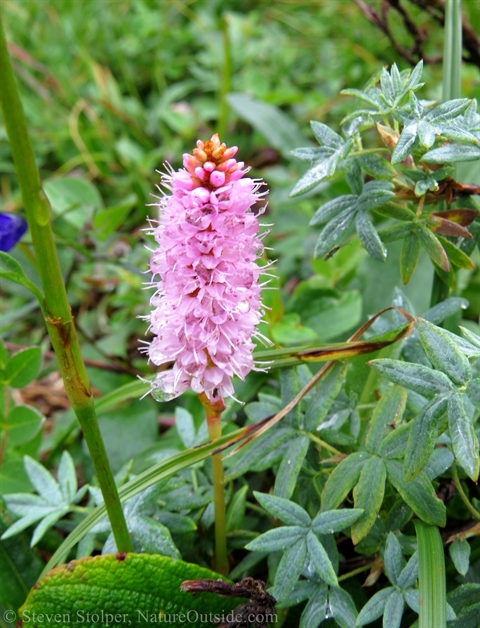
Sitka Burnet has a wonderful rose-like smell
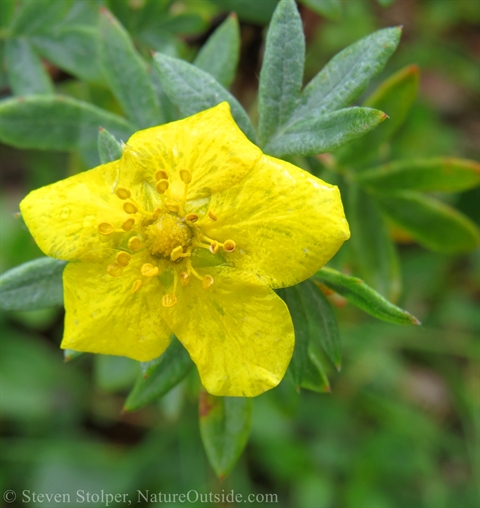
Tundra rose pops against the backdrop of green
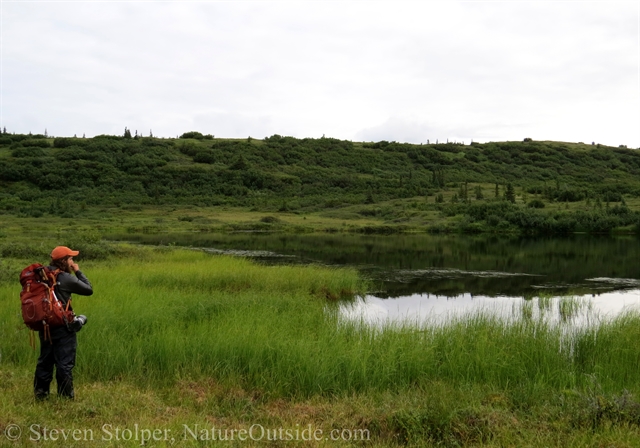
Sam leads us to our first kettle pond
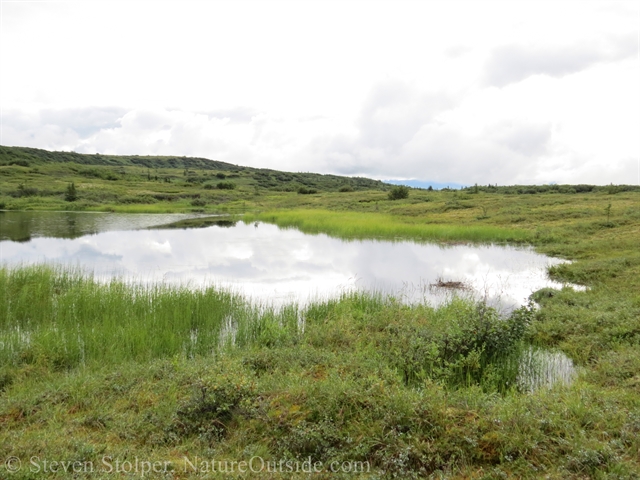
Kettle ponds look like “holes” in the tundra.
Labrador Tea (Ledum palustre) is an ankle-high evergreen shrub that carpets the ground. And each step releases a pungent sweet-resin fragrance. It’s the smell I associate with tundra. And I’ve brewed an aromatic tea from leaves of this plant.
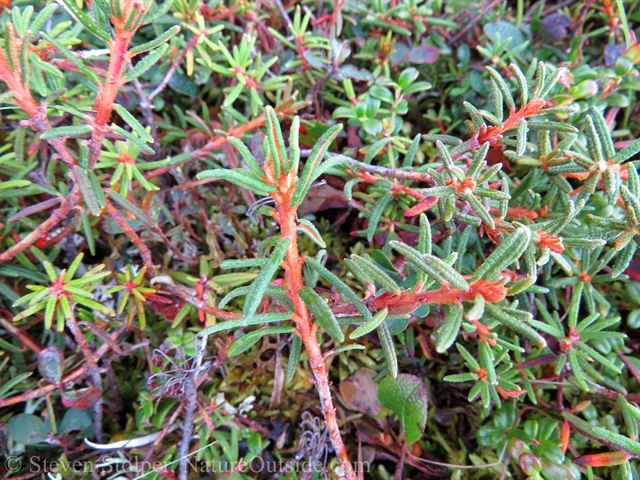
Labrador Tea (Ledum palustre). The underside of its leaves has a rusty stripe.
We reach the plateau and are greeted by an amazing view. Signs of wildlife announce themselves to the keen observer. We find recent Caribou scat and spy beaver lodges in the distance. The beavers take advantage of the kettle ponds to defend their lodges.
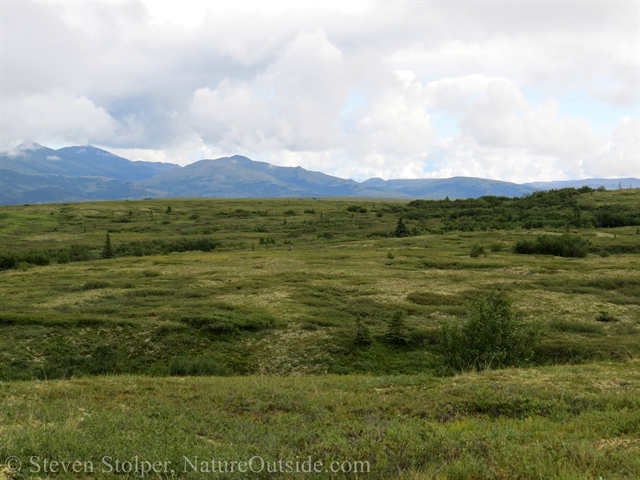
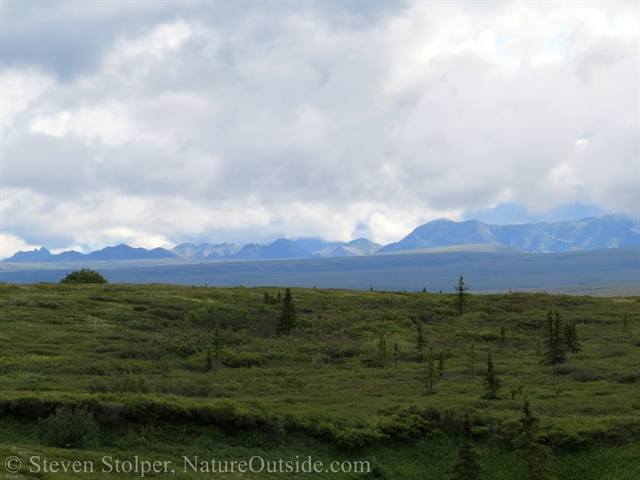
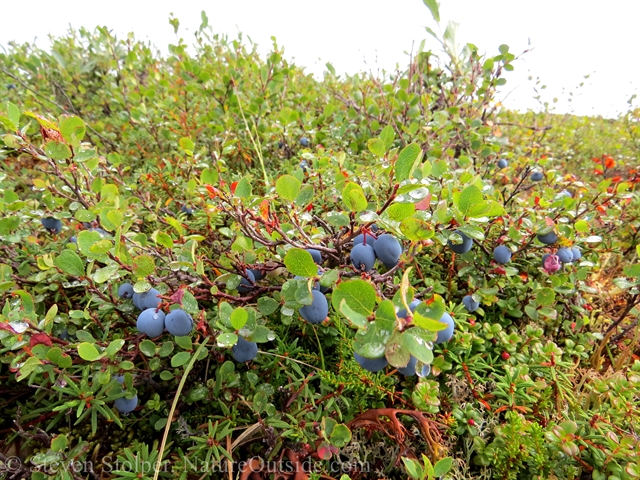
Blueberries are everywhere
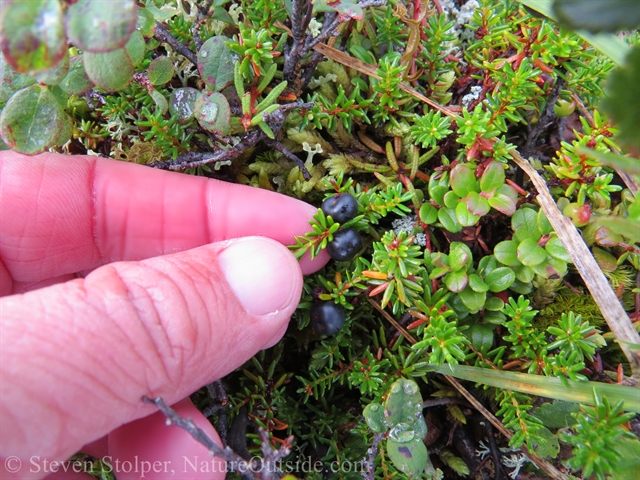
Cowberries are plentiful
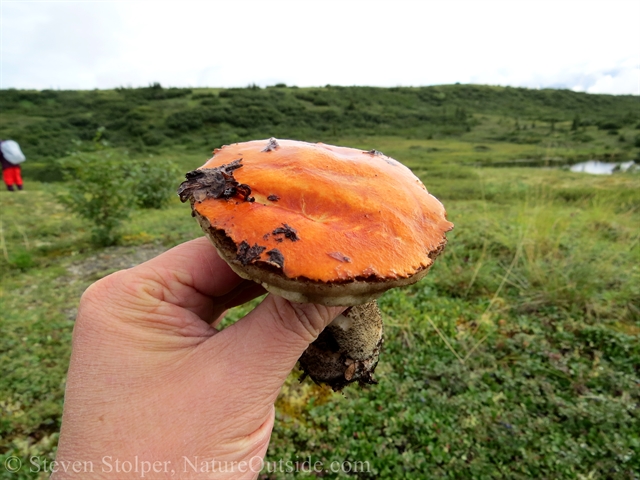
I find a colorful fungus
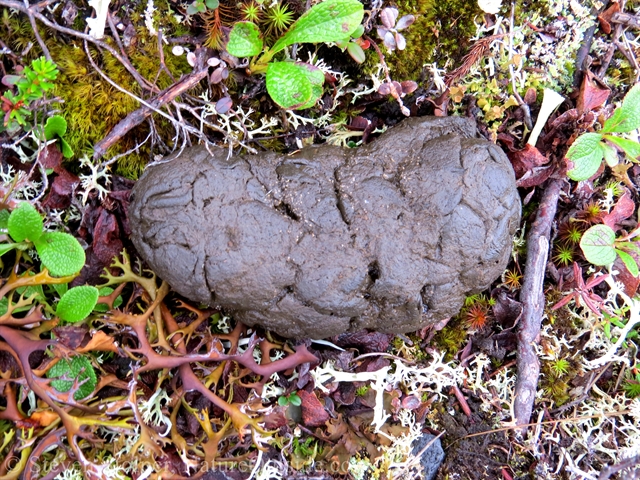
Caribou scat (caked)
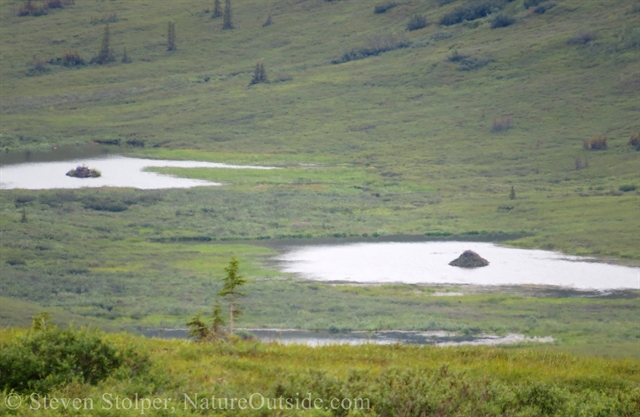
Beavers take advantage of the kettle ponds to build their lodges
Sam guides us across the tundra. His flowing beard adds several years to his appearance. Sam is an avid birder, and he slings a camera across his shoulders with a lens the size of a nuclear submarine.
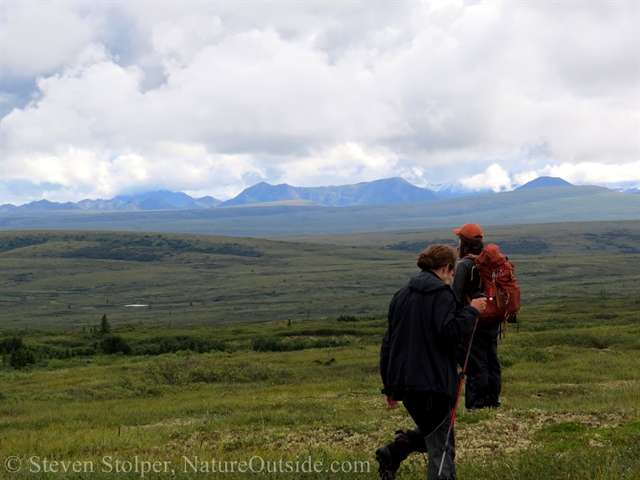
Sam and a hiker set out across the tundra
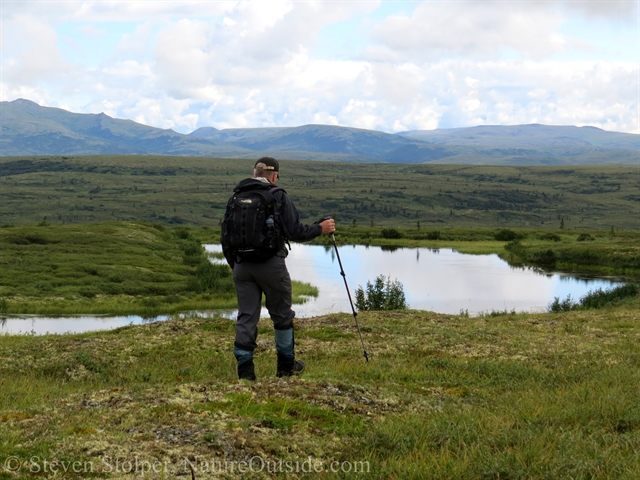
Hiker and kettle pond
Kill Site
Our group rambles across the spongy tundra. The scale of the plateau is remarkable! Imagine tiny ants on the surface of a colossal picnic table.
To the unsuspecting, it appears we are the only creatures moving about. But the signs say otherwise.
We begin to follow a trail along the top of a shallow ravine. The well-worn thoroughfare is obviously made by Grizzly Bears. Enormous piles of bear scat remind us how vulnerable and puny we are compared to the predators that roam the plateau. I’ve seen a Grizzly family use a ravine like this as a napping place. The “dead ground” helps them avoid detection from afar. I keep my eyes peeled.
As we follow the trail, we come upon a disturbed area full of bone fragments. The foliage is torn and the ground scarred and trampled.
We’ve stumbled upon the stage of a life and death drama. The ground bears witness to the ferocity of the struggle. Sam says the fragments imply wolves were at work.
We search the area. It’s littered with bones.
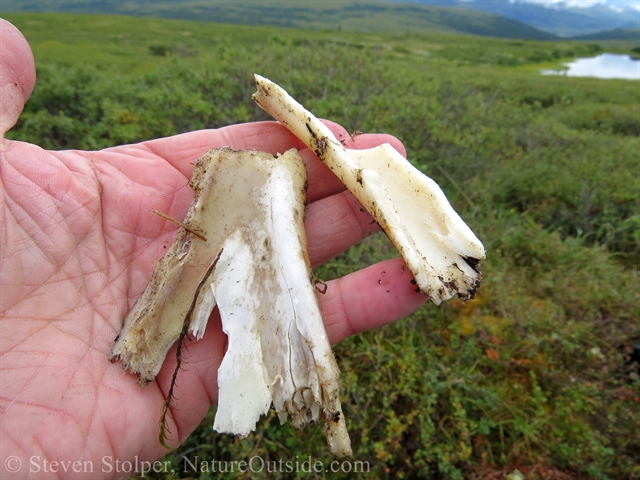
I find bone fragments everywhere
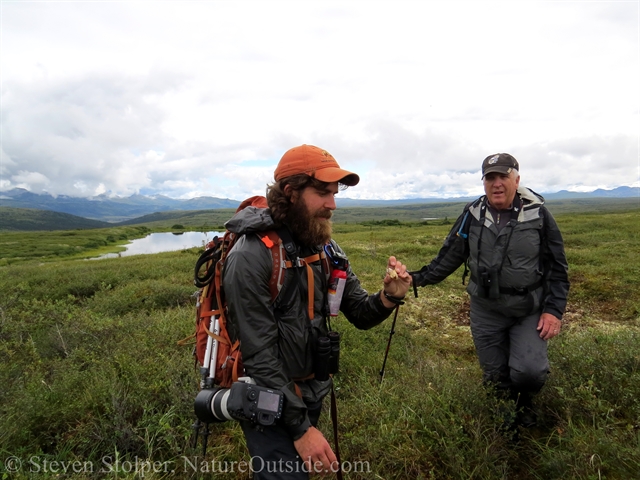
Sam examines a bone fragment
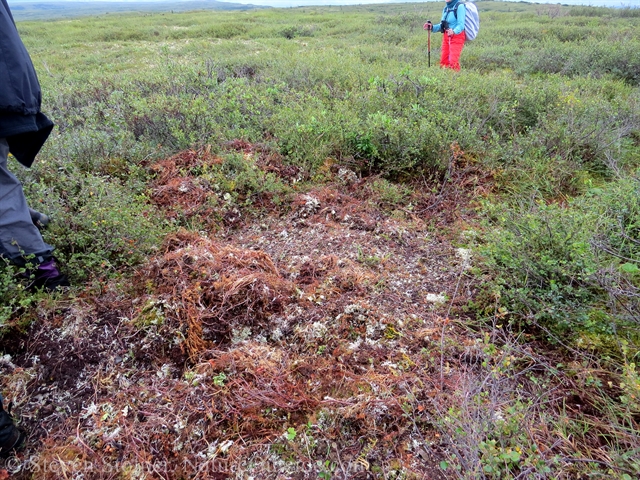
The disturbed area tells the tale of a violent struggle. This is a kill site.
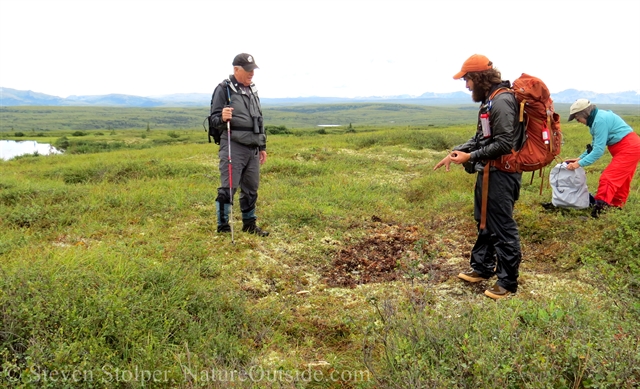
Sam finds another disturbed area
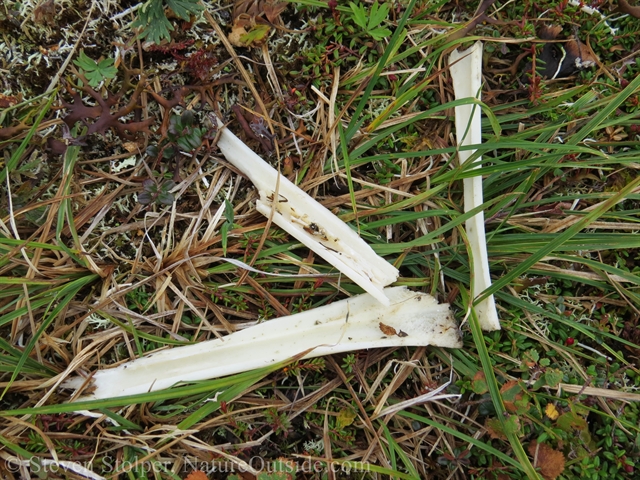
More shattered bones. It requires great force to do this.
We widen our search and find a second area where the foliage is trampled. In it we find a toe. It looks like the toe of a caribou. But it could be a small moose. We search further and discover the jawbone of a an ungulate. But we’re still puzzled. Moose or caribou?
It looks like the animal was killed (with quite a struggle) in the first area and consumed in the second.
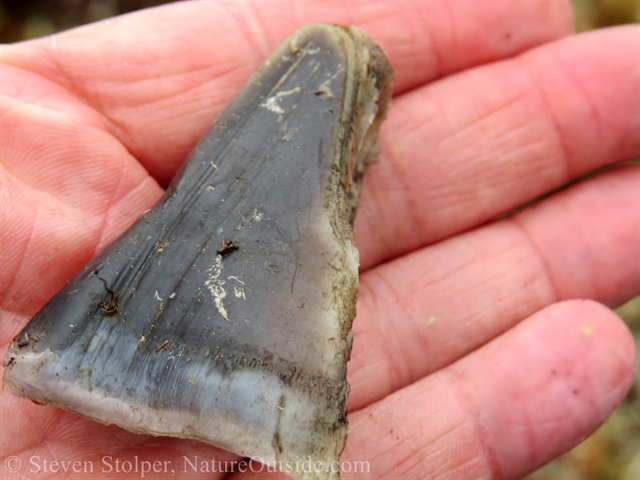
The toe of a small moose or caribou
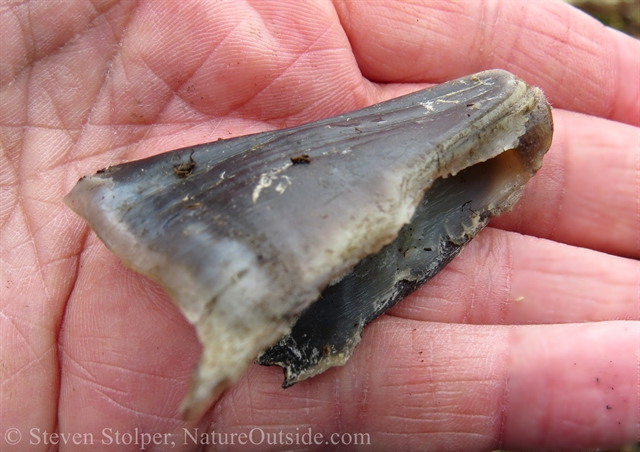
The toe of a small moose or caribou
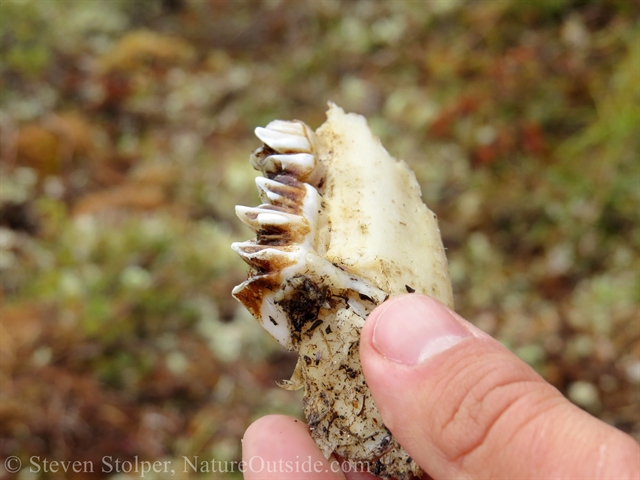
From the jaw of an ungulate
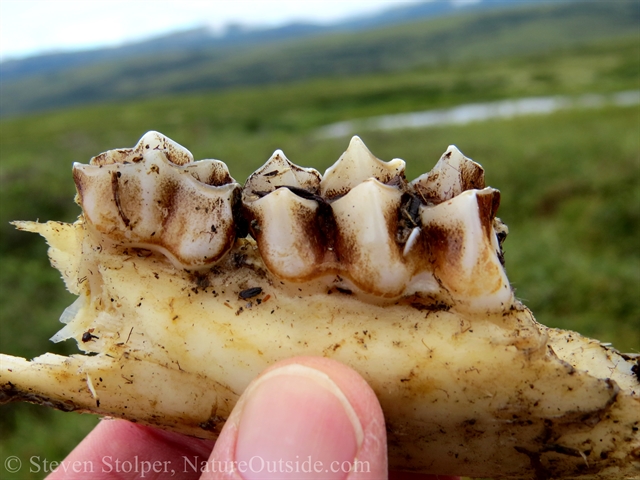
Ungulate jaw
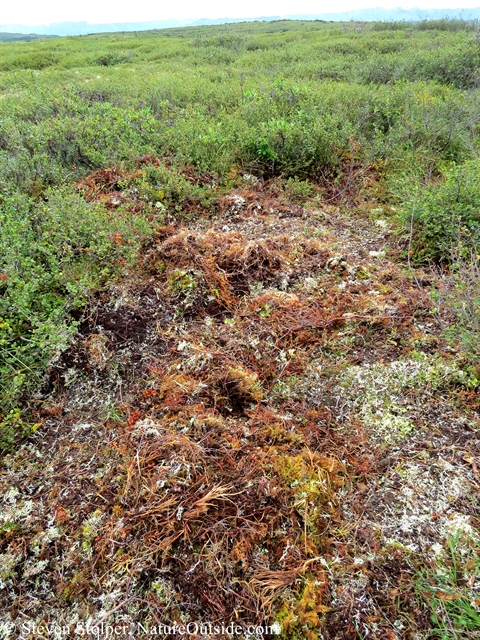
The animal appears to have been consumed in this second disturbed area
As I explore the second area, I hear a call from nearby. A third area reveals an answer. But it also generates more questions.
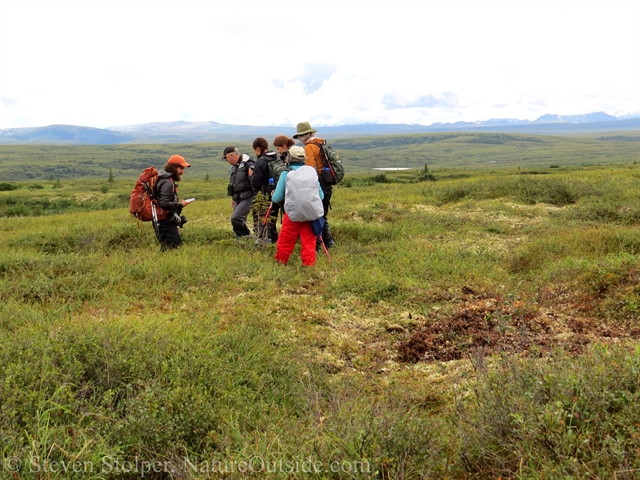
We discover a third disturbed area
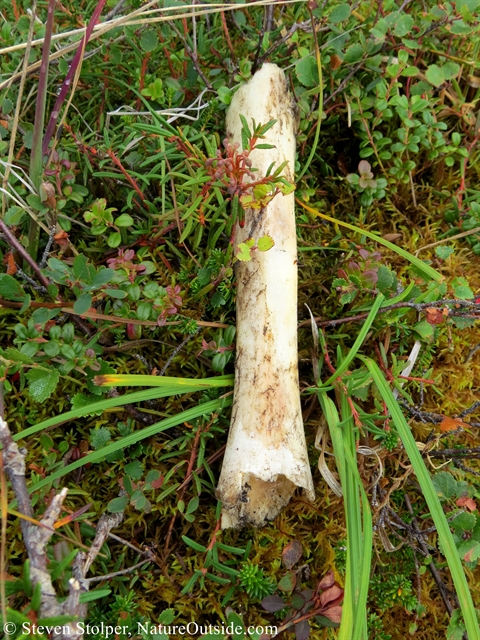
Leg bone
It’s a young moose! The fur is unmistakable. Probably this year’s calf. We also find more bear scat, as well as bones that have been cracked open to consume the marrow.
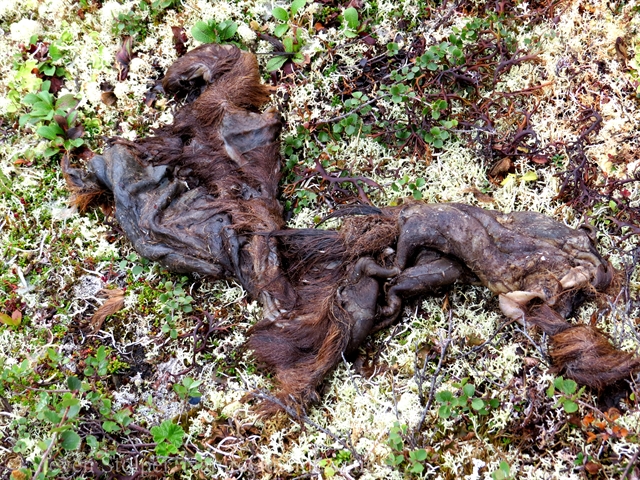
Skin from moose calf
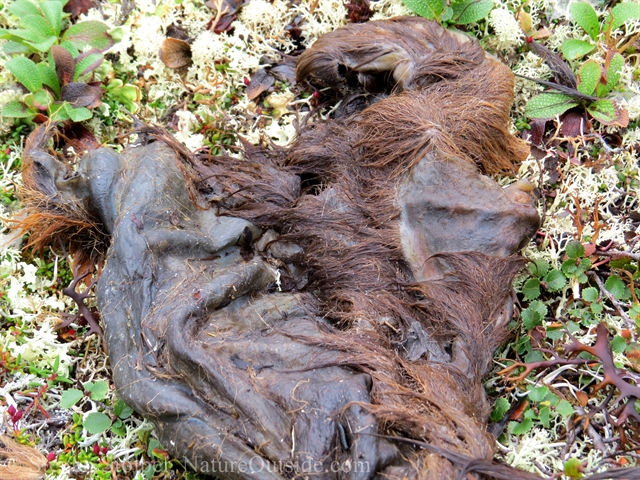
The remains of a moose calf
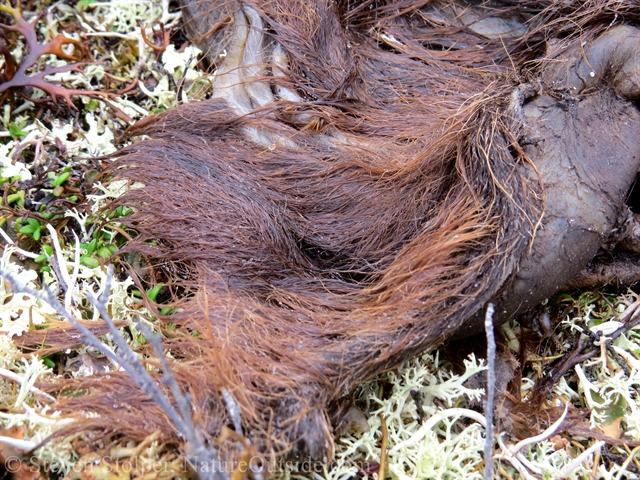
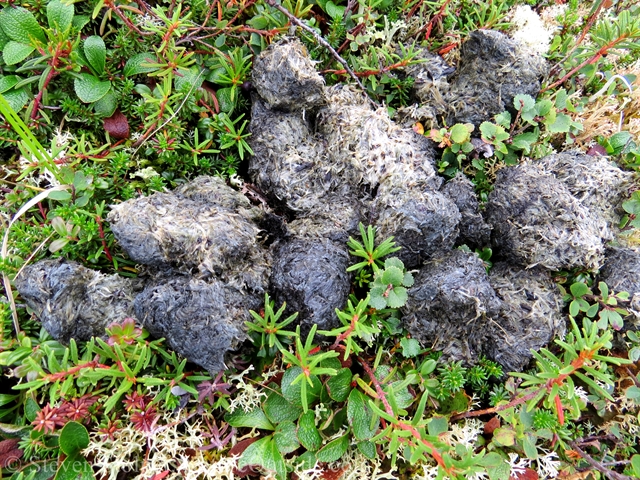
Grizzly Bear scat
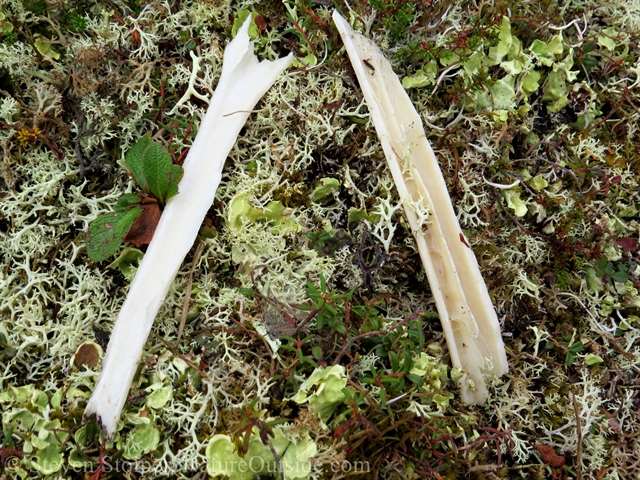
More splintered bones
What happened? Did wolves bring down a moose calf in the first area and consume it in the second? Did a Grizzly push the wolves off the kill and drag it to the third area? Or did the wolves kill the moose and the Grizzly scavenged the kill afterward?
It’s also possible the Grizzly killed the moose calf. Some of my fellow hikers witnessed a dramatic chase just days before when a Grizzly zipped by them in pursuit of a cow moose and calf. The wolves could have happened on the carcass afterward.
The shattered bones at the kill site and the wide area of dispersal implies that wolves killed the moose calf. But the Grizzly Bear trail and scat at the site show that a Grizzly could have made the kill.
My mind struggles with the problem. It’s tough when you visit a new area. You don’t have enough local knowledge to interpret what you see.
Know Your Clothing
Our guide Sam leads us onward.
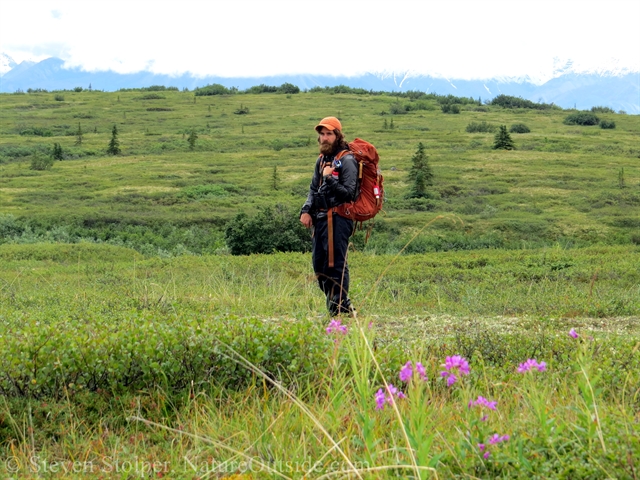
Sam leads us onward
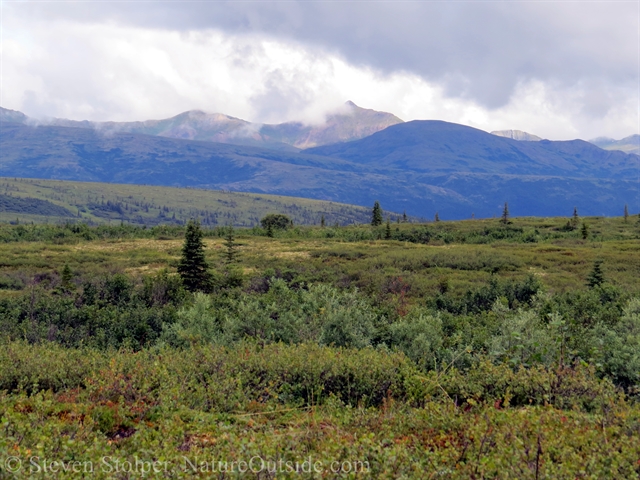
On the way, I use my compass to check my bearings. And… I’m way off! Am I truly lost? I ask Sam. He indicates the direction I think is north. Is it possible my compass is off? It’s always been reliable.
In confusion I extend my arm – and the north-seeking needle swings around! Holy cow! I’ve buggered the compass!
I wear my camera in a pouch on my chest. The automatic zoom lens must have a magnet in it. When I bring the compass close to my chest, the north-seeking needle swings away from north. When I extend my arm, it returns to the direction I assume is north.
I’m shaken. I’ve been planning a solo hike of many miles later in the week. If I had not been aware of this, I might have wandered miles off course, alone.
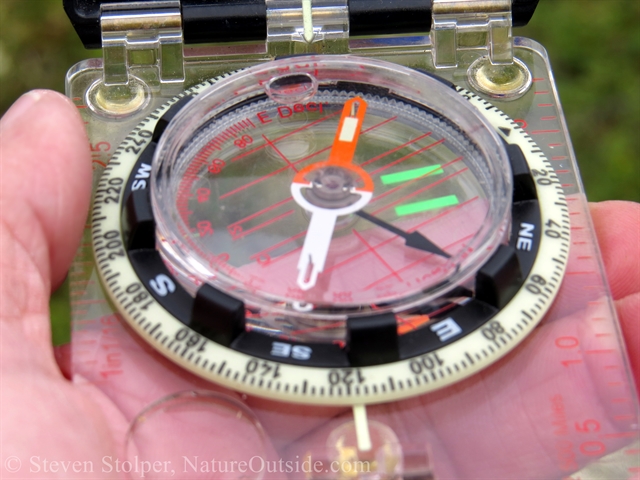
I learn a scary lesson about using my compass near electronics
We continue across the tundra. Everything is wet from the recent rain. I wear rain pants with gaiters over my boots. I’ve never liked gaiters. So I didn’t bring my pair with me to Alaska. But I appreciate them now! After my first day on the tundra, I borrowed a pair from the lodge where I’m staying. The gaiters keep the water from dripping down my rain pants into the tops of my boots. They also keep the upper part of by boots dry and comfortable.
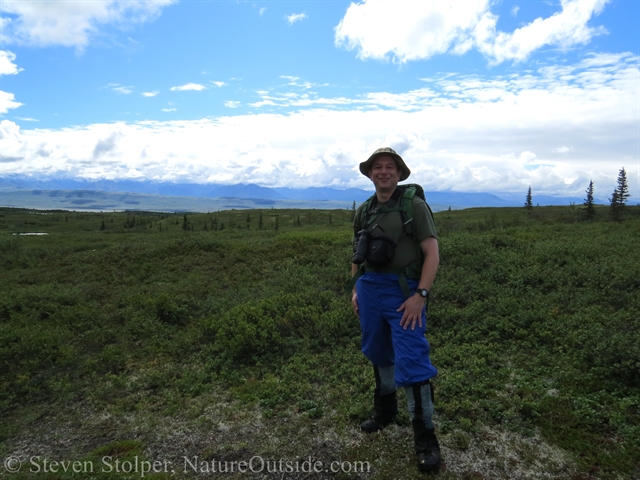
I’m wearing a wicking shirt and my usual hiking BDU pants. I wear a fleece pullover, if it’s cold, and my rain gear. On this trip, I learn the value of gaiters (gray) to keep water from entering the tops of my boots.
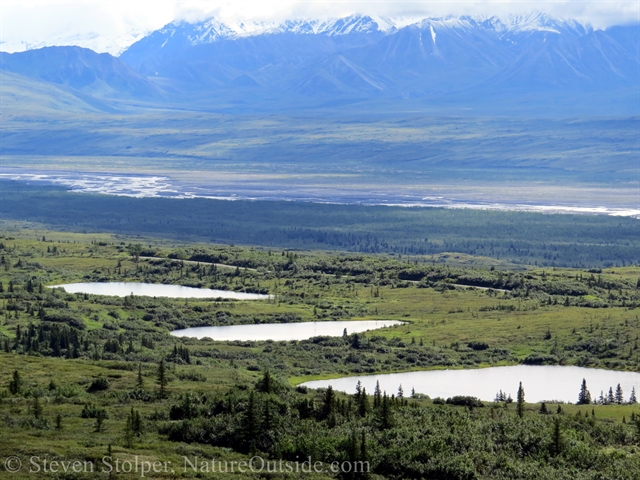
More kettle ponds along the edge of the ridge
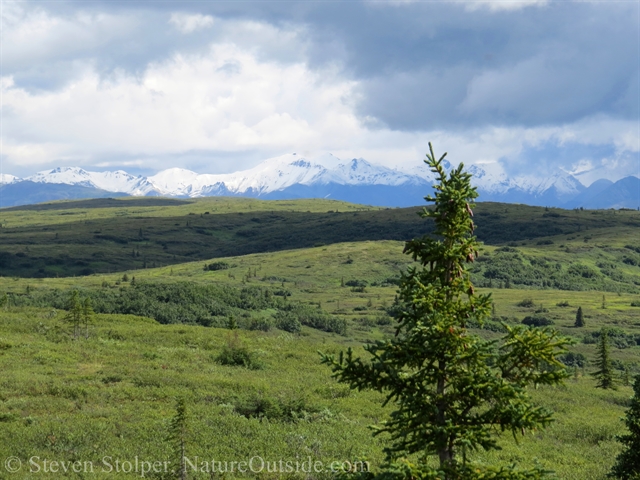
Meditation Interrupted
We’re nearing the end of our trek. Sam calls a halt at the top of a rise on the edge of the plateau. To the east is tundra, and below us to the west is a stunning view of the McKinley Valley. South of us the snowy Alaskan Range looks remote and forbidding.
Sam asks us to lie on our backs, quiet, for ten minutes. I love the idea! It’s the perfect place for a sit spot.
I use my pack as a headrest as I contemplate the incredible scenery around us. I marvel at this region, old beyond comprehension, and wonder about its fate. Humans are changing the climate. What will happen when the permafrost melts?
My senses stretch to gather every sight, sound, and smell. I sniff the sweet-resin fragrance of Labrador Tea. I must be lying on some of the plants. I relax and try to merge with the land.
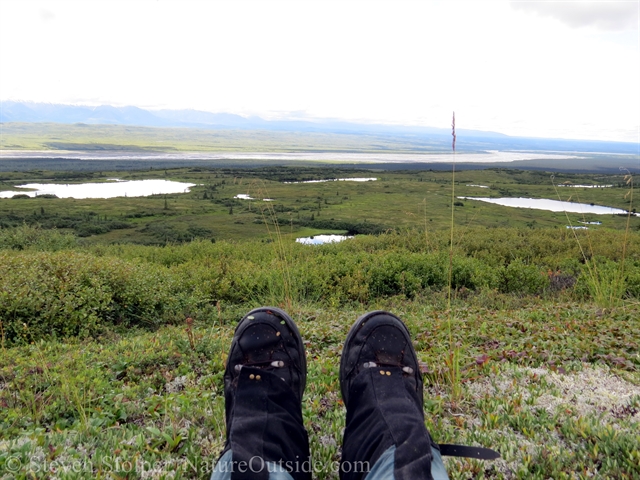
My sit spot above the McKinley Valley. Trackers often employ sit spots to hone their senses and learn about a place.
I feel a ripple of movement behind me. Some of my fellow hikers are stirring. The members of our group understand the concept of “sit spot.” So their movement, along with the ripple of excitement that flows over the group indicates that something is amiss.
I roll onto my stomach and see that many of the hikers are no longer lying in quiet reflection. They’re crouched, all looking in the same direction. I steal over to join them. I’m careful to keep low as I cross the top of the rise so I’m not silhouetted against the sky.
A pair of female caribou are grazing by the side of a nearby kettle pond. And to our amazement, they leave the bank and move directly toward us. I realize that the group has been lying quiet and still for almost ten minutes. The caribou are unaware of our presence.
We keep low as they approach. We’re motionless, but still in plain view.
They’re close now, and Sam surprises us all by rising slightly. He places his hands slightly over his head, fingers splayed. Is he trying to look like a caribou? How is their eyesight? Will they actually fall for that?
The caribou halt. They sense something. But there is no wind to give us away. To my astonishment, they move closer to investigate!
They’re almost on top of us now. It’s thrilling to be so close to animals I know only from dioramas in New York’s Museum of Natural History. They’re large, too. Larger than I thought from afar.
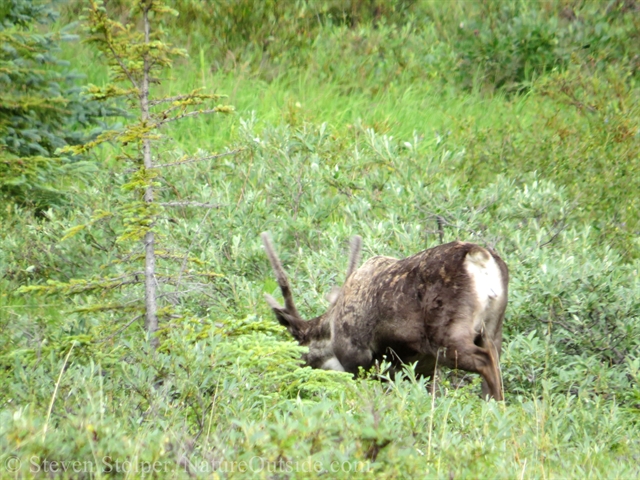
Two female caribou graze leisurely as they move toward us
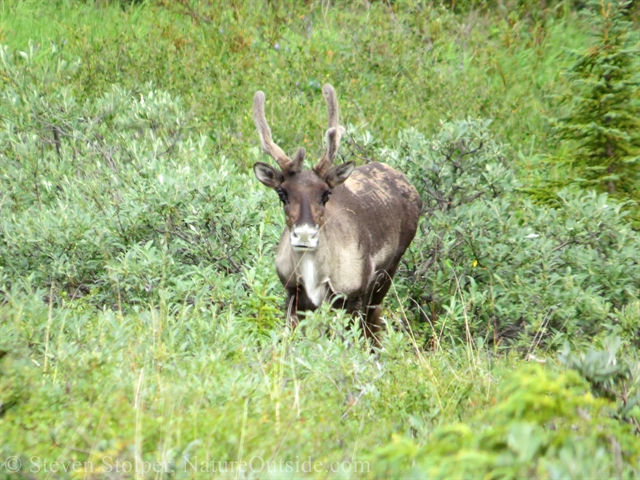
A caribou looks in our direction. Does she sense us?
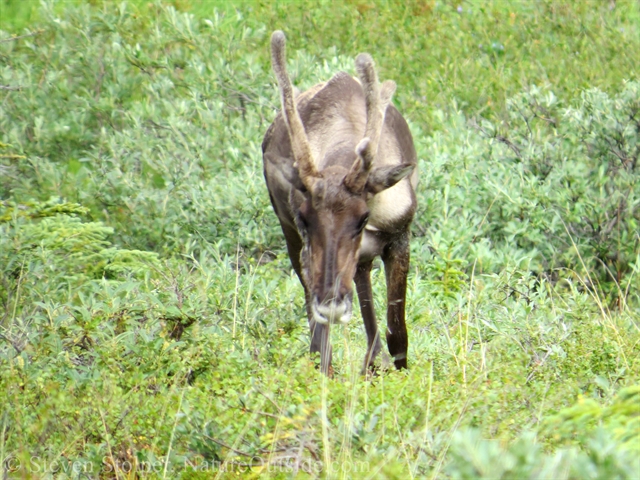
The caribou is uncertain of what it sees. But it comes still closer.
Suddenly the gig is up! They’re moving fast, now. They course through the tundra with speed I didn’t imagine possible. It’s a good thing they’re not chasing us! The caribou move with surprising fluidity. They glide across the spongy tundra like it’s the close cropped grass of a football field.
But it’s their direction of travel that catches me unprepared. Instead of turning to flee, the caribou circle around our hilltop – using shrubs and the terrain as cover. I fumble with my camera. Their circular path gives me a chance for a few quick photos.
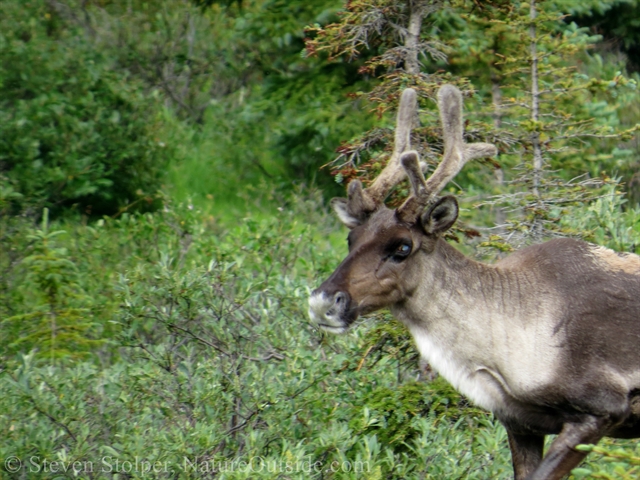
Caribou on the move
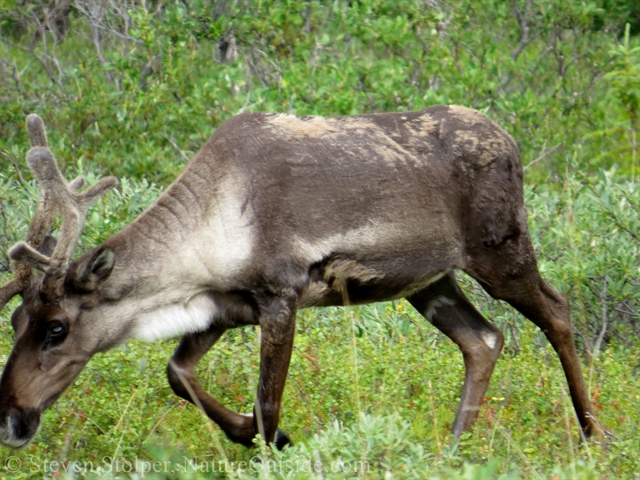
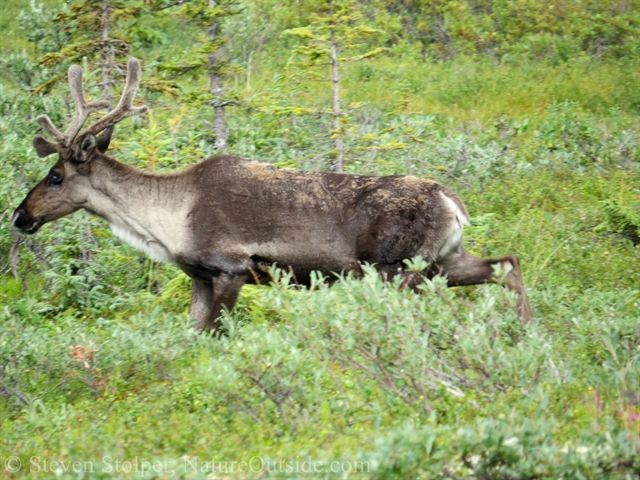
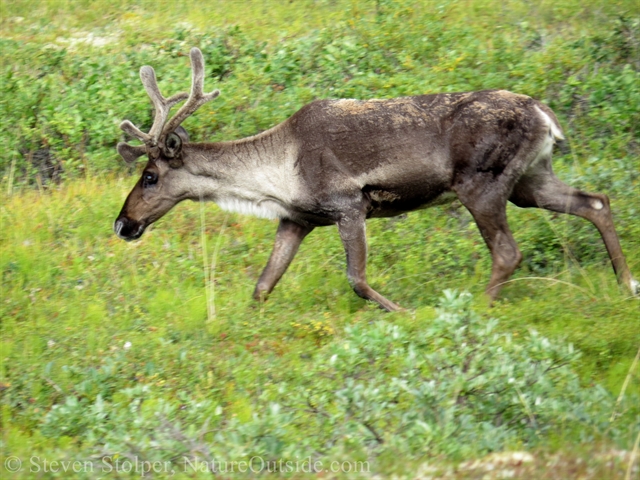
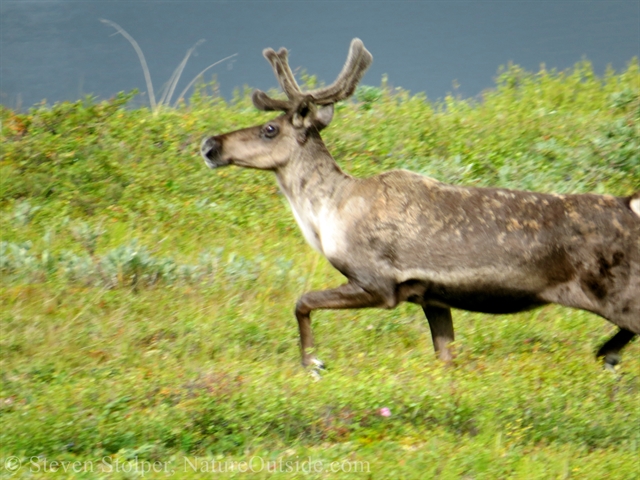
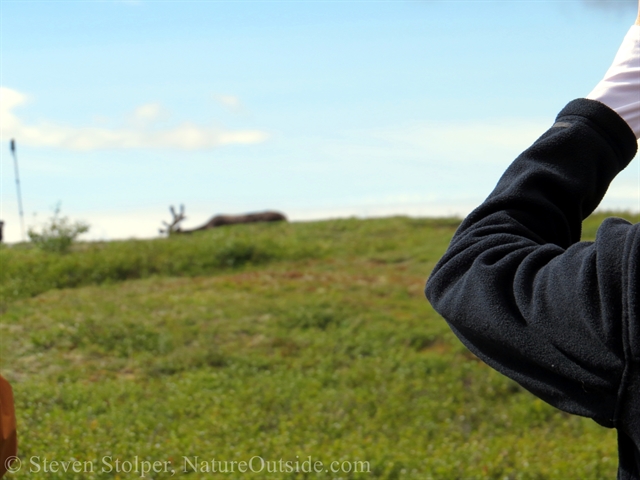
The caribou circle around the rise we were using as our sit spot
Another Amazing Day on Planet Earth
It’s time to leave. As we descend the ridge to our vehicle waiting below, we stumble upon a Northern Harrier and a male caribou.
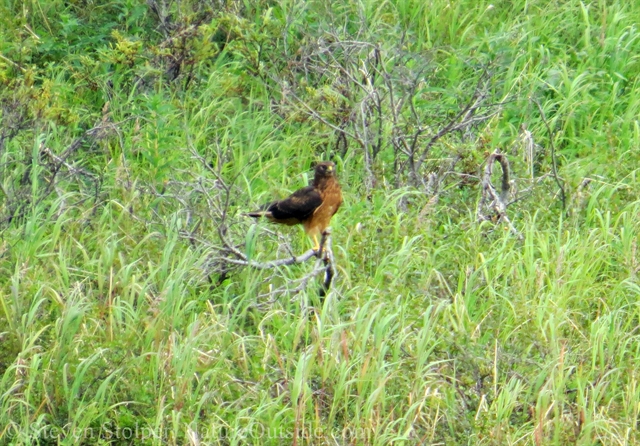
Northern harrier
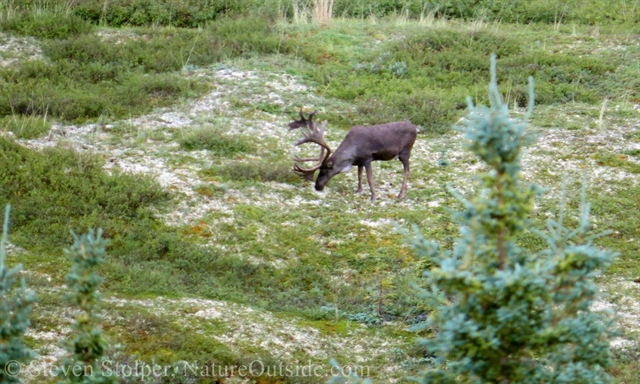
Male caribou. Notice the enormous antlers.
They remind me that the best things in life are not things at all. It’s experiences we share with one another. And as if to reinforce this thought, I glance back at the plateau to see a rainbow waving goodbye.
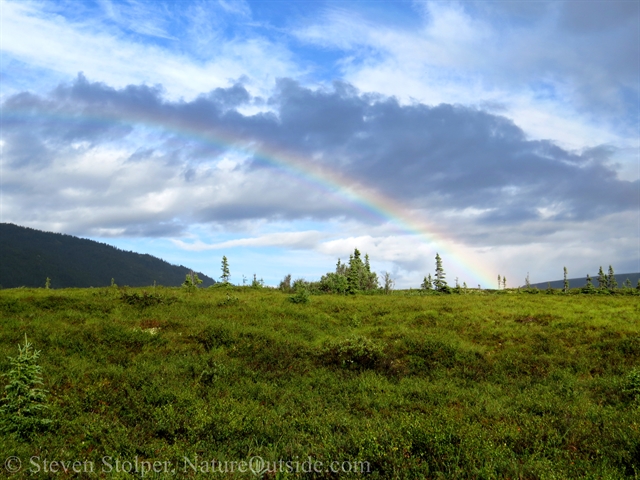
Rainbow over the Xerxes tundra
More from Denali on NatureOutside
Denali – Train to the Wilderness
Denali – Tundra Hike
Denali – The Tale of Ten Bears
Denali – Bush Flight
For fun facts and useful tips, join the free Bushcraft Newsletter.



Leave a Comment